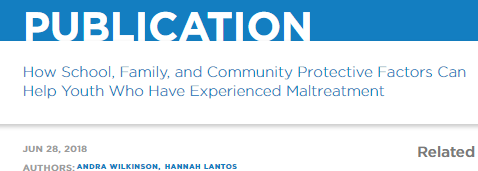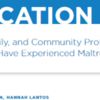Youth involved in both the child welfare and juvenile justice systems—a specific high-needs population—often experience a host of negative outcomes beyond those experienced by their peers involved in only one (or neither) system. These outcomes include higher rates of homelessness, mental health problems, and joblessness. These “dually involved” youth are also more likely to engage in both nonviolent (such as stealing) and violent (such as fighting) delinquent or criminal behaviors in adolescence and young adulthood. Such behaviors, along with childhood experiences of abuse and neglect (or maltreatment), can impact the well-being of these youth and their ability to become self-sufficient adults.
In this report, we examine—in the general population—the relationship between self-reported experiences of child maltreatment and later delinquent or criminal behaviors across age, sex, race, and sexual orientation. By studying this relationship in the general population, our intent is to glean lessons for offering better support to dual-system youth, and to provide insights for the field as it strives to develop and refine preventative approaches to ensure that young people do not initially enter the justice system. To do this, we also explore a variety of protective factors—at the peer, family, school, and neighborhood levels—to test whether these factors decrease delinquent or criminal behaviors and whether those protective effects differ across sex, race and ethnicity, or sexual orientation.
Some protective factors were helpful for all youth—not just those who experienced maltreatment.
- For violent delinquent or criminal behaviors, connections to parents, school, and neighborhood were universally protective and did not vary by maltreatment status.
- Connection to one’s neighborhood was protective against engagement in nonviolent delinquent or criminal behavior for all adolescents, not just for those with a history of maltreatment.
To read more of Andra Wilkinson and Hannah Lantos' article, please click here.



Comments (0)